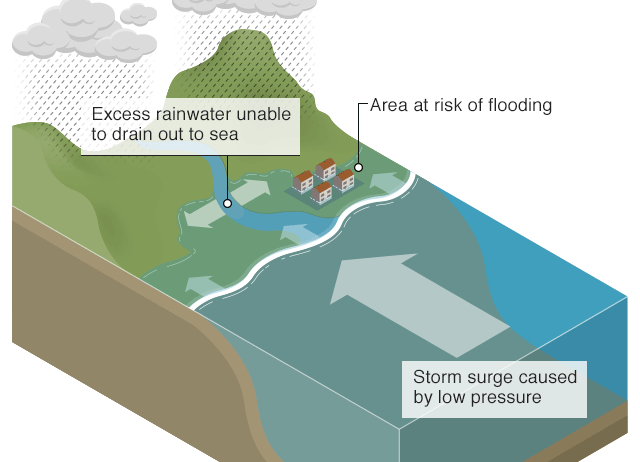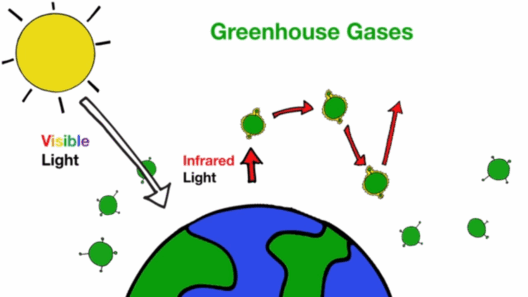In recent years, the collective wringing of hands over the bizarre weather patterns across the globe has reached a fever pitch. The erratic skies, marked by torrential rains, droughts, and unprecedented temperature fluctuations, can no longer be dismissed as mere anomalies. These occurrences present compelling evidence pointing towards a more significant underlying conundrum: global warming and its multifarious repercussions on our climate systems.
As we delve deeper into the intricacies of this climatological phenomenon, it’s imperative to first understand the mechanics of Earth’s atmosphere. The delicate balance of this intricate web is disrupted when humans emit greenhouse gases, primarily carbon dioxide and methane, through activities such as fossil fuel combustion, deforestation, and industrial processes. These gases accumulate in the atmosphere, creating a thermal blanket that traps heat. Consequently, this leads to a gradual yet insidious rise in the planet’s average temperature, a phenomenon widely referred to as global warming.
The repercussions of this warming are omnipresent, influencing weather patterns in unprecedented ways. More energy in the atmosphere translates into more vigorous weather systems. This destabilization incites erratic phenomena: storms intensify, precipitation patterns shift, and seasonal changes become increasingly unpredictable. It seems almost paradoxical—one might expect a warmer world to simply create more sunny days. However, the reality is far more intricate; the energy added to the atmosphere becomes a catalyst for extreme weather events.
Take the example of hurricanes, which serve as a prime illustration of this fervent interplay between global warming and weather volatility. Warmer sea surface temperatures contribute to increased hurricane intensity and rainfall. The ferocity with which these tempestuous storms emerge has escalated in recent years, wreaking havoc on coastal communities and rendering them ill-prepared for such cataclysmic events.
Moreover, temperature elevation leads to the unfortunate phenomenon of “ Arctic amplification.” As the polar regions warm at a faster pace than the equator, the result is a widening of the temperature gradients that affect atmospheric circulation. This disruption can lead to prolonged weather patterns: for instance, a warm spell can become an extended drought, or a frigid snap can settle over an area for longer than it typically would. The result is a chaotic mishmash of weather that leaves no region unscathed.
Unusual weather phenomena are not confined to extreme events; instead, they extend into seemingly mundane occurrences as well. Research indicates that warmer winters can lead to earlier blooming in plants, which can disrupt ecological balances and affect pollination cycles. Moreover, the subtle shifts in local climates lead to pests thriving in regions where they previously could not survive, posing unforeseen challenges for agriculture and forestry. Therefore, the implications stretch far beyond the immediacy of extreme weather; they envelop entire ecosystems.
The inundation of urban areas underscores another critical aspect of erratic weather—the urban heat island effect. As cities expand, they absorb and retain heat more effectively than surrounding rural areas. This causes cities to experience temperature extremes, with local weather becoming increasingly erratic and exacerbated due to climate change. Increased precipitation can also lead to flooding, further complicating urban planning and infrastructure resilience.
Interestingly, the ramifications of climate change and erratic weather patterns also transcend geographical boundaries. For instance, droughts in one part of the world can influence food prices globally, as shortages ripple through markets and supply chains. Similarly, increased rainfall can lead to agricultural challenges in other regions. The interconnectedness of our world makes it evident that climate change is not merely a local issue; it’s a global dilemma that necessitates collective action.
Addressing the root causes of global warming is paramount to mitigating the erratic weather phenomena that have become all too familiar. Transitioning towards renewable energy sources, enhancing energy efficiency, and adopting sustainable agricultural practices can significantly decrease our carbon footprint. Policy changes at local, national, and international levels are crucial to foster resilience in the face of inevitable climate-induced challenges.
Moreover, education plays an instrumental role in reshaping perspectives toward climate change and erratic weather. A well-informed populace can make choices that prioritize sustainability and conservation. Engaging communities in discussions about environmental stewardship is vital to galvanizing action. Awareness can lead to local initiatives that empower individuals to contribute positively toward mitigating climate change.
In conclusion, the erratic skies that signal our changing climate are not signals of doom; rather, they serve as a clarion call for transformation. The complexity of global warming demands a nuanced understanding and a multifaceted approach to tackling the challenges ahead. By facing these truths and pledging to change our habits, we can influence the future trajectories of our weather systems. Embracing sustainable practices not only promises a more stable climate but also fosters curiosity and innovation as we seek solutions to the environmental challenges we have ignited. The journey may be fraught with obstacles, but the pursuit of a better, more climate-resilient world is one worth undertaking.






